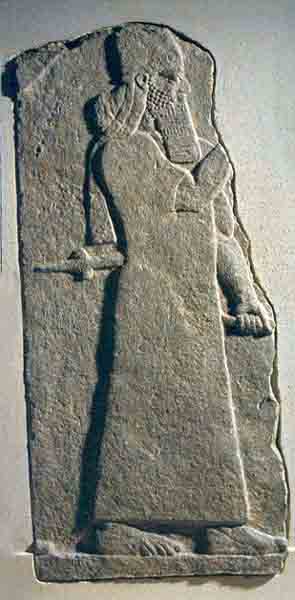Image Details

Erich Lessing
“I overwhelmed him … and he … fled like a bird, alone,” the Assyrian king Tiglath-pileser III (reigned 745–727 B.C.E.) poetically boasts in an Assyrian annal describing his defeat of King Menahem of Israel (reigned 747–737 B.C.E.). Menahem paid 1,000 talents of silver to retain his throne and became a vassal of Assyria. Tiglath-pileser is shown here in an eighth-century B.C.E. limestone relief from his palace at Nimrud.
The Assyrians’ conquest of Israel is also described in the Bible, which tells of Tiglath-pileser’s invasion of Israel and his alliance with Ahaz of Judah, who refused to join Israel in battle against the Assyrians (2 Kings 15:19, 29, 16:7–9): “In the time of Pekah king of Israel, Tiglath-pileser king of Assyria came and took Iyon, Abel Beit-Maachah, Yanoah, Kedesh and Hazor. He took Gilead and Galilee, including all the land of Naphtali, and deported the people to Assyria” (2 Kings 15:29).
